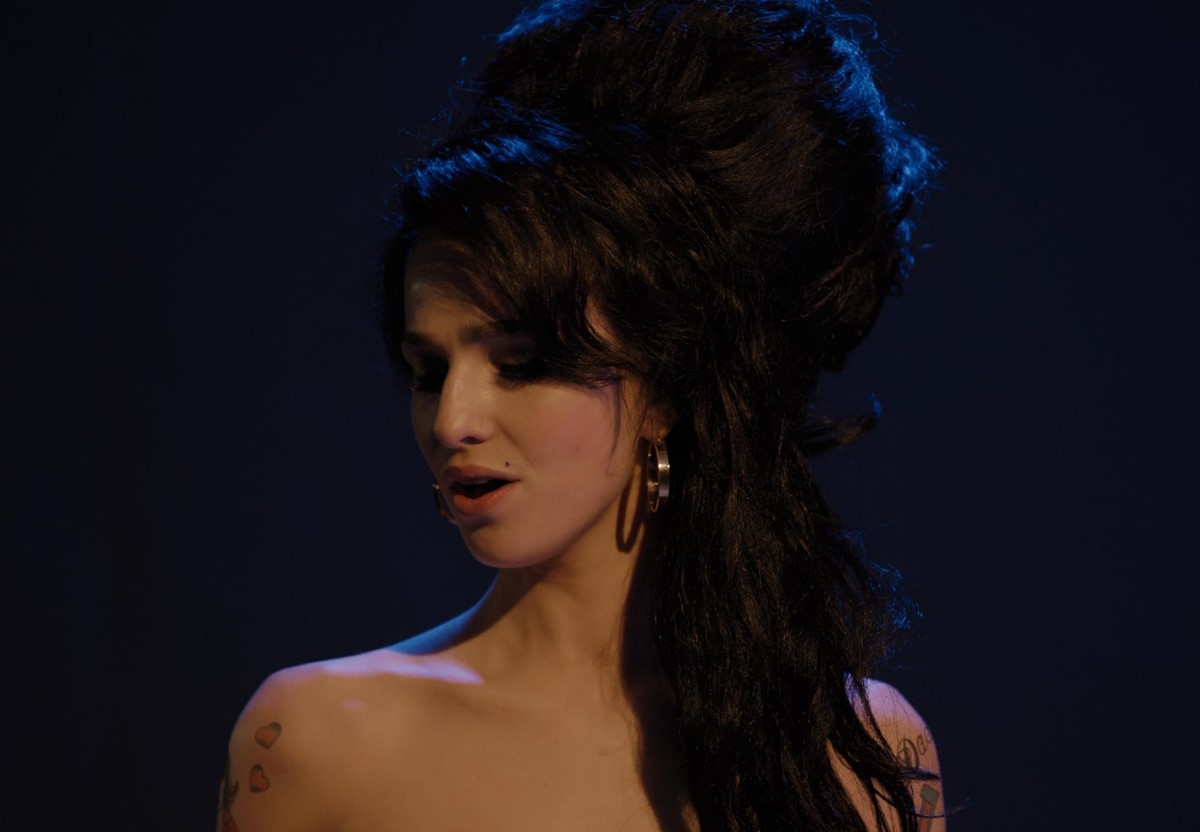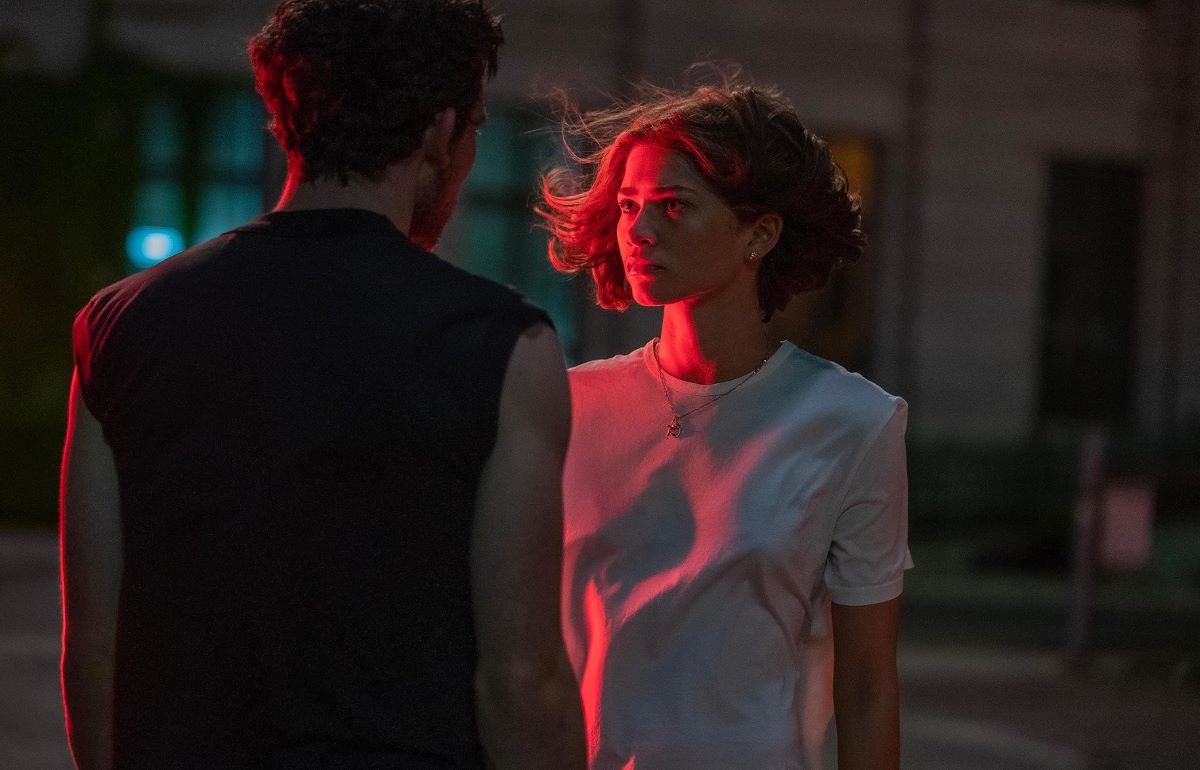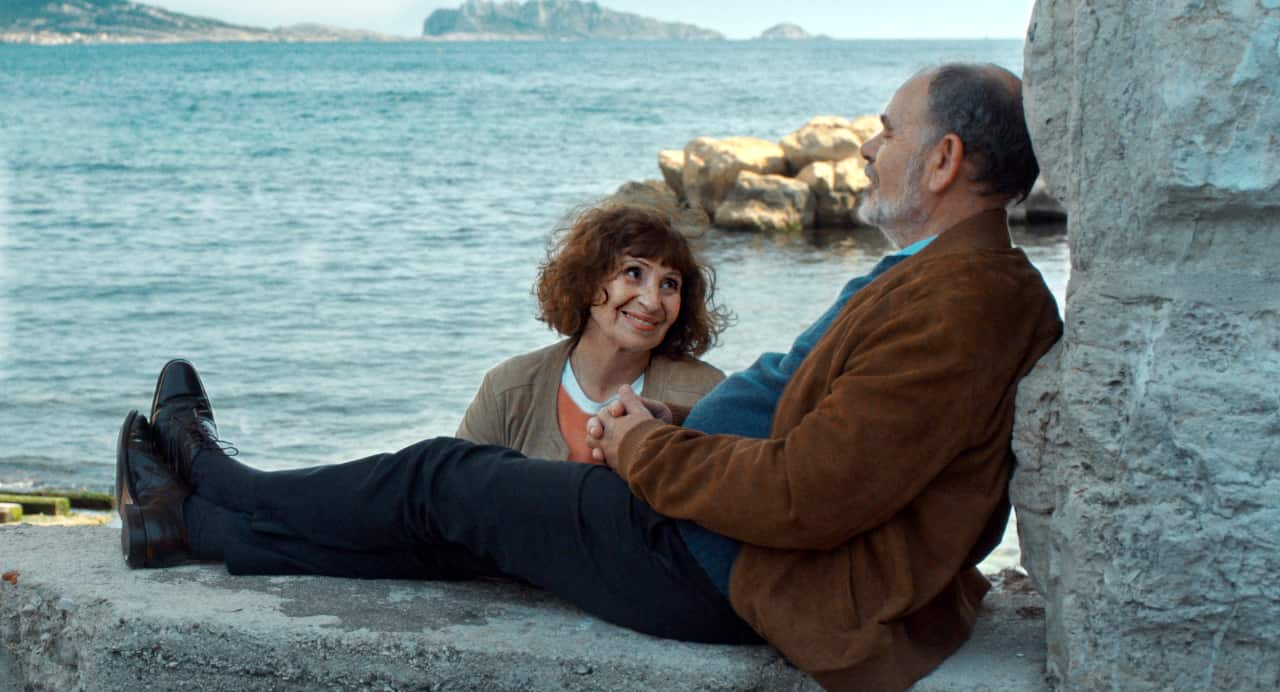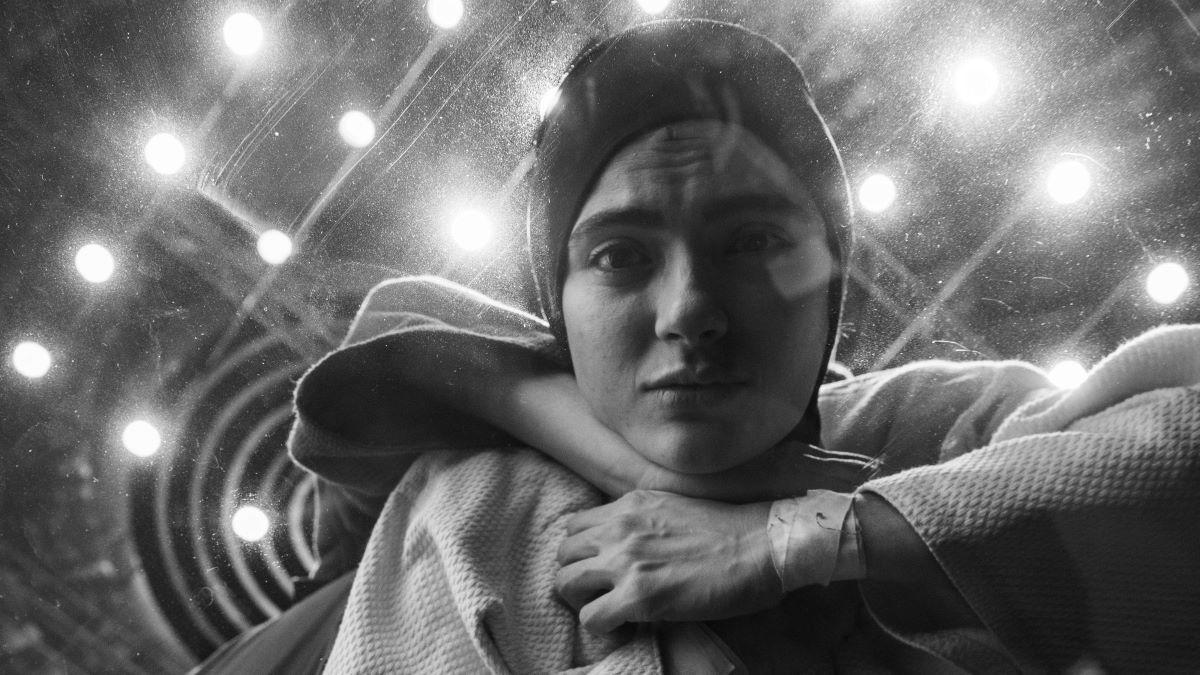by Pauline Kael
The great thing about a tall tale on the screen is that you can be shown the preposterous and the implausible. In Indiana Jones and the Temple of Doom, the director Steven Spielberg is like a magician whose tricks are so daring they make you laugh. He creates an atmosphere of happy disbelief: the more breathtaking and exhilarating the stunts are the funnier they are. Nobody has ever fused thrills and laughter in quite the way that he does here. He starts off at full charge in the opening sequence and just keeps going. There isn’t a letdown anywhere in it. A friend of mine denounced the picture as “heartless”; another friend called it “overbearing.” In a sense, they’re right, but they’re also off the beam. This kind of storytelling doesn’t have to be heartfelt; it just has to hold your interest (and delight you). Indiana Jones is a series of whoppers—it depends on verve and imagination to concoct the next big fib. And it leaps from one visual exaggeration to another—overbearingness is part of its breakneck style. (If it were modest and unassuming, it would fall apart.)
Set in 1935, Indiana Jones and the Temple of Doom probably has to be called a pre-sequel, or prequel, to Raiders of the Lost Ark, which was set in 1936, but it isn’t pulpy in the way that Raiders was. It doesn’t have the serious undercurrents that Raiders had; it’s less “sincere”— and that’s what is so good about it. The two films have the same adventurer-archaeologist hero, Dr. Indiana Jones (Harrison Ford), who wears a brown fedora and carries specs and a bullwhip. Indy seems more assured now, and more formidable physically—he’s a professor with the chest of a horse. The plot is minimal this time: the action starts in Shanghai, at the Obi Wan night club, where the lusty blond Willie (Kate Capshaw), in a spangled crimson gown, struts in front of a line of tap-dancing chorus girls and belts out the film’s keynote song, “Anything Goes,” in English and Chinese. After a scramble at the club that features a diamond, a dose of poison, a vial of antidote, a lazy Susan, a pack of Oriental gangsters, and a rickshaw, and turns into a full-blown masterpiece of cheerful slapstick, Willie and Indy and his tiny, daredevil sidekick, the Chinese orphan Short Round (Ke Huy Quan), make a fast getaway by plane and drop off (literally) in India. There they are greeted by an elderly tribal chieftain who believes they have come in response to his prayers to Siva. He takes them to his blighted village; the land is arid, and the starving villagers are in mourning. The sacred stone that they believe conferred blessings on them has been stolen, and their children have disappeared. The three agree to go on a mission to retrieve the stone and the children, and the chieftain provides them with elephants to ride, and guides. The quest takes the three to the sumptuous palace of an odious boy maharajah (where the gold-digger Willie breathes the atmosphere of wealth and is momentarily in ecstasy), and from there, by underground passageway, to the temple where the villainous high priest Mola Ram (Amrish Puri), the leader of the Thugs, presides over human sacrifices to the goddess Kali. (The name Mola Ram is an anagram for Malomar; the Thugs—expert stranglers and sneaks —and the evil cult of Kali will be familiar to people who have seen the 1939 adventure comedy Gunga Din.)
The subject of a movie can be momentum. It has often been the true—even if not fully acknowledged—subject of movies. In Indiana Jones and the Temple of Doom, it’s not merely acknowledged, it’s gloried in. The picture has an exuberant, hurtling-along spirit. Spielberg tried kinetic comic-strip routines in his 1941 and couldn’t quite make them work; here comparable routines come off just about perfectly. Spielberg uses old wheezes like the lazy Susan and you’re charmed by it, remembering how, as a kid, you were nuts about these spinning discs. Indiana Jones is the kind of comedy in which the hero, in the middle of terrifying circumstances, and with his foot smoking, yells for water, and a deluge comes at him. The film sets the comic-book context for the hyperbolic perils that the three central characters get into, and keeps us laughing at the very fact that they don’t get a chance to catch their breath. The whole movie is designed as a shoot-the-chutes, and toward the end, when the heroic trio, having found the sacred stone and freed the stolen children from the maharajah’s mines, are trying to escape in a tiny mine car, and a shift in camera angles places us with them on a literal rollercoaster ride, the audience laughs in recognition that that’s what we’ve been on all along. Yet Spielberg seems relaxed, and he doesn’t push things to frighten us. The movie relates to Americans’ love of getting in the car and just taking off—it’s a breeze.
Sometimes when a director gets a chance to do a sequel, he starts with the knowledge that he gained on the first film. Coppola and The Godfather, Part II are the classic example. In its own, very different way, Indiana Jones stands in relation to Raiders of the Lost Ark as The Godfather, Part II stands to The Godfather. Though the picture is a Lucasfilm production, and the story idea is by George Lucas (with a script by Willard Huyck and Gloria Katz), it doesn’t resemble the Star Wars movies the way that Raiders did. It’s more cohesive, and it’s much more clearly and confidently a Spielberg movie, with parody links to The Wizard of Oz and Gunga Din, and also to Saturday-afternoon serials and the Hope-Crosby Road movies and more recent screen adventures such as the cliffhanger stunt in Butch Cassidy and the Sundance Kid. The jokiness about the Mysterious East has something of S. J. Perelman’s waggery; to an American kid a man in a turban is automatically not to be trusted.
Spielberg and his team come up with sequences that have an elusive mixture of comedy and wonder. At night in the jungle, the three travellers pause on the way to the palace; Indy and Short Round sit on the ground playing cards, squabbling amicably, and ignoring Willie, who has thus far been nothing but a shrill, complaining nuisance to them. It’s like a nostalgic American campfire scene or picnic on a Saturday Evening Post cover, but Willie, in the background, is being attacked by vampire bats and menaced by baboons, iguanas, snakes, and even an owl. She rushes around shrieking; the man and the boy are oblivious. This gag may have seemed terrific even on paper, but the look of it—the American small-town-boys’-world images it recalls—is inspired. Kate Capshaw’s Willie is the clown on the team; she has routines right out of burlesque. There’s a classic cockeyed-comedy bit involving her and her elephant, who treats her as derisively as the others do—the elephant likes to come up behind her, nudge her, and spray her with water. Willie gets so fed up that she grabs at what she thinks is its trunk, and throws a python at Indy. (She’s too exhausted to marvel at how she managed to detach it.) And there are sequences that are like what children dream up when they’re having a gross-out and trying to top each other: the three hungry travellers sit down to a banquet, with the boy maharajah at the head of the huge table and the high-ranking members of his court in evening dress, and the servants bring platters of delicacies—slippery, squirming baby eels, baked beetles, eyeball soup, and, for dessert, chilled monkeys’ brains to be scooped out of the skulls.
Later that night, Willie and Indy separate, but before he goes across the hall to his room she bets him that he’ll miss her so much that in five minutes he’ll be back at her door, and he bets her that she’ll come to him. With each of them pacing, hoping for the other’s arrival, this is the one relatively quiet interlude in the movie. Indy’s pacing is interrupted by a gigantic Thug who’s determined to strangle him. It’s a long, terrifying fight, won only with Short Round’s help. When it’s all over with, Indy rushes to Willie’s room to make sure she, too, hasn’t been attacked, and she’s triumphant. It feels like just five minutes.
Kate Capshaw had me laughing right from the start, but she—and her role—made me uncomfortable in the first half hour or so. You could see that she was trying to be funny—she squealed like Betty Hutton and she acted like a cross between Ginger Rogers and Bette Midler. She was playing a self-centered brat who was useless in emergencies; Willie’s only response was to scream. And since Willie doesn’t contribute much to the visual heroics, she could have used wittier lines—or at least a moment of intelligence—so that when she and Indy kiss there’s a reason for it. (It seems as if they’re getting together just because they’re male and female.) But Kate Capshaw won me over: her low-comedy brazenness and the whole conception of Willie as uncouth give the picture an additional layer of parody. Instead of being a pallid little darling in distress, she’s a broad in distress, and the situations gain from her noisy wholesomeness.
This entire flying-carpet movie, with its comic-strip frames, is a pastel tourist paradise, as if a kid had filled in the numbered spaces to show what colored pencils can do. The look of it is itself funny. (Older kids may think the picture is a demonstration of what mattes can do.) Part of the fun of moviegoing for children is in getting wise to what’s fake and what isn’t. There are so many degrees of “reality” and fakery involved here that it could almost have been designed to keep them guessing; the stunt work and the laboratory special effects seem inseparable, and at the close of the Shanghai night-club sequence there’s a fall through several canopies which evokes the lineage of modern movie trickery—the Douglas Fairbanks, Sr., pictures, and the famous opera- house shot in Citizen Kane, and every cowboy movie in which the hero jumped from a building into a wagon or onto his horse. Indiana Jones plays with the whole idea of movie magic. This spirit of play (which I felt was present only intermittently in Raiders) makes possible some glimmering storybook effects that probably weren’t planned at all and were achieved only half-consciously. When our three find their route from the palace to the temple, they go through a passageway carpeted with creepy, crawly things. But this isn’t a gross-out. Our reaction is a mixture of horror and awe, because the shining, symmetrical insects look like crawling jewels. They’re—perhaps inadvertently—beautiful. And when some of them fall from the walls and are tangled in Willie’s frizzy reddish-gold hair they’re like the precious gems she has always wanted. The picture has fun-house skeletons and a night scene with a shooting star (a Spielberg signature); it has startling twists and sometimes small poetic curves. When Short Round wants to get into the speeding, out-of- control little mine car that Willie is in and a huge villain is clinging to, he uses the man’s body as a staircase and climbs right up. It’s pure Buster Keaton; that’s real magic.
The stunts are brought off with incredible precision. (The way the editor, Michael Kahn, clips shots, you can almost hear him chuckling.) But plot points are occasionally fuzzy. There’s a bit of information planted early on: Willie tells Indy that her father made his living as a magician, and so when the three are hiding in the temple (they’re posed so that the scene is an homage to a shot in Gunga Din) and they look down into the vast cave where Mola Ram is conducting the rituals of Kali-worship and plucking the heart out of a man’s chest—and as the man is consigned to fire, his heart, held high in Mola Ram’s hand, bursts into flame—everything is prepared for Willie to spot Mola Ram as a con man who had a heart up his sleeve. But that revelation never comes, and since Lucas’s special-effects company, Industrial Light & Magic, has become virtuosic about simulating the look of flesh being torn into, the poetic flourish of the burning heart may be too ’’real” for some viewers. The movie is set in a make-believe world, with cross-references to both Lucas’s and Spielberg’s other films, but this sequence is said to frighten some people, and there has been talk on television and in the press of making the film’s PG classification more restrictive.
It’s my impression that almost invariably the media stir up a fuss about the wrong movies. If you take a child to Disney’s Dumbo, this is what the child sees: Dumbo’s mother—a circus elephant—is so angry at kids who taunt Dumbo and pull his ears that she attacks them, and as a result she is beaten and locked in a cage for mad elephants. Dumbo is left on his own, and the other elephants humiliate him constantly. He’s made into an elephant clown, and during a routine he’s left at the top of a fireman’s ladder in a burning house, crying elephant tears, because the human clowns fail to rescue him. His only friend is another outcast —the mouse Timothy. Each sequence is brought up to its maximum psychological resonance, and when a child projects himself into this vat of bathos and moroseness it’s agony: the situations on the screen have immediate correlations with his own terrors. But what correlatives could there be in Indiana Jones and the Temple of Doom ? It doesn’t take advantage of childhood traumas. With its Road to Morocco sensibility, it constantly makes fun of itself, and it’s as remote from children’s real-life fears as Sabu’s escapades in The Thief of Bagdad. The emotional mechanism of Dumbo is to make what happens to the cartoon animals real to kids; the emotional mechanism in Indiana Jones is to make what happens to the human characters unreal. And the hero carries you through—you know Indy won’t die. Grownups who are upset by the menu at the banquet must be forgetting how cheerfully kids have traditionally sung such macabre ditties as “The worms crawl in, The worms crawl out, The worms play pinochle on your snout, And one little worm, Who’s not too shy, Climbs into your ear, And out your eye” and “Great green globs of greasy grimy gophers’ guts, Mutilated monkeys’ meat, Little birdies’ dirty feet, Great green globs of greasy grimy gophers’ guts, And I forgot my spoon, Aw shucks.”
The fuss in the media may be caused simply by the fact that there’s something slightly off in the tone and the timing of the cult-of-Kali sequence. All through the picture, the comedy dominates the thrills, but here, when, at Mola Ram’s instigation, Willie is put inside a contraption that looks like a deep-fat fryer, lowered partway down toward a pit of red-hot molten lava, and raised and lowered several times, Spielberg’s control seems to slacken. The sequence is tense but flat; Willie has no wisecracks to deliver, and even her shrieks (which we’ve learned to laugh at affectionately) aren’t very funny.
Spielberg’s work in this movie is being called mechanical, but there are machines and then there are Rube Goldberg machines. Just because the slapstick requires brilliant timing (and the director’s genius for composition) doesn’t mean it’s cold or impersonal. Possibly some people have got that idea because Spielberg shies away from giving the audience full, clear satisfaction. When the rotten Mola Ram pours some horrible guck down Indy’s throat, Indy fights it but is held down; the scene suggests a child’s fear of a dose of medicine. The guck—a “potion”— puts Indy in Mola Ram’s power; he’s in a trance, and we wait to see what will get him to snap out of it, but Spielberg doesn’t point up the instant of awakening (though it appears to be the result of Short Round’s quick thinking). And although Ke Huy Quan’s Short Round is a nifty conception—this grasshopper-size kid is smarter and more resourceful than Indy, and a good case could be made for his being the true (and invulnerable) hero of the adventure—his victory over the boy maharajah isn’t given the rush of feeling that the moment seems to call for. The name Short Round is an homage to Samuel Fuller, who used that nickname for the Korean kid in his 1950 movie The Steel Helmet; for Fuller, action is everything—and that’s the acknowledgment being given here—but Fuller also piles on moral sentiment. Spielberg doesn’t, and although that’s part of his elegance as a moviemaker, he slights the emotional resolution of the plot. Having made the visual point that after the children were stolen from their village the land became a desert where nothing grew, he almost owes us a drenching downpour and lush vegetation to signify the children’s return. It isn’t quite satisfying to see them united with their families on land that looks only a little greener. Spielberg’s not providing a formal closure makes the film’s structure seem weaker than it is. He polishes off routines like that five-minute gag perfectly, but he may be a little embarrassed about giving us the same kind of pleasure on the larger plot points. He just comes to the end of the story and stops. Still, this is the most sheerly pleasurable physical comedy I’ve seen in years. And I’m grateful that Spielberg doesn’t give the audience a chance to revel in how noble Indy is.
The only thing that really bothered me about the movie was the John Williams score, which is always selling excitement; it’s too heavy for the tone of the film, and it’s set too loud. Although there isn’t much talk, the film gives you such a lot to respond to that the nonstop music produces overload; you feel as if you’d been listening to a crowd roar for two hours. (And for almost the full time you are: the audience’s enthusiasm is uncontainable.) Away from the discomfort of the sound, the movie plays even better, in memory. But that sound level isn’t anything as simple as a miscalculation; it’s more like a guarantee. There is still the question of why a director as skillful as Steven Spielberg should make a succession of “ultimate” roller-coaster movies. (He has indicated that he may do a third in the Indiana Jones series.) It can’t just be that he wants the money. It must go deeper. What I think makes this movie so overwhelming that some people recoil from it is that there is an emotional drive in it. The picture’s momentum may be congruent with Spielberg’s own impetus. Having had the most meteoric rise of any young director in the history of movies, he may feel that he has to push on to ever more inventive fantasies. He has made the most successful movie of all time (E.T.) and three of the runners-up (Jaws, Close Encounters of the Third Kind, and Raiders of the Lost Ark). His own career is a roller coaster. How can he make a picture about “normal” life? He has only his childhood to draw upon. As an adult, he rides a fantasy wilder than anything in his movies.
The New Yorker, June 11, 1984




